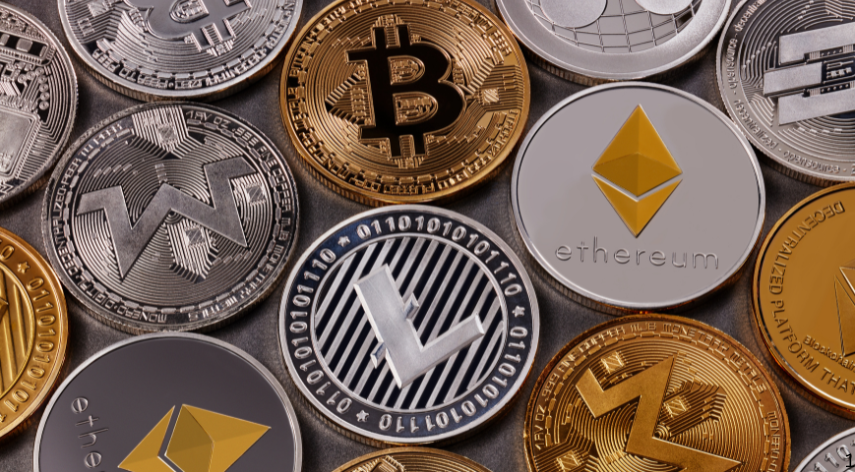Blockchain and Web3 are two buzzwords which have been gaining big traction in recent years. Both represent cutting-edge improvements in era, promising to revolutionize the way we interact with the internet. But what exactly are these standards, and the way are they related? In this article, we’ll dive deep into the mối liên hệ giữa blockchain và Web3 (the connection among blockchain and Web3) to apprehend their synergy and implications for the destiny.
Understanding Blockchain
The Basics of Blockchain Technology
Blockchain is largely a disbursed ledger era that permits statistics to be saved across multiple computer systems in a way that ensures safety, transparency, and immutability. Each record or transaction is saved in a “block,” and these blocks are linked together in a chronological “chain.”
Key Features of Blockchain
Decentralization: Unlike conventional centralized databases, a blockchain is maintained by a network of nodes (computer systems) instead of a unmarried significant authority.
Transparency: All transactions on a blockchain are visible to all individuals, making sure a excessive degree of
transparency.
Immutability: Once a block is introduced to the blockchain, it can’t be altered or deleted, making the information tamper-evidence.
How Blockchain Works
Blocks and Chains
Each block in a blockchain includes a listing of transactions. When a block reaches its capability, a new block is created and linked to the preceding one, forming a chain. This chain of blocks is saved throughout all nodes within the network.
Consensus Mechanisms
To make certain all nodes agree on the validity of transactions, blockchain networks use consensus mechanisms like Proof of Work (PoW) or Proof of Stake (PoS). These mechanisms prevent fraud and make sure the integrity of the records.
What is Web3?
The Concept of Web3
Web3 represents the following era of the internet, in which decentralized networks empower customers with extra manipulate over their records and digital interactions. Unlike Web2, that is dominated by using centralized platforms, Web3 objectives to create a extra open and user-centric net.
Differences Between Web2 and Web3
Web2, the current new release of the net, relies closely on centralized servers and intermediaries. Web3, however, leverages blockchain generation to cast off these intermediaries, giving customers direct manipulate over their on line presence.
Key Features of Web3
Decentralized Applications (dApps)
Web3 enables the creation of decentralized applications that run on blockchain networks. These dApps are not managed through any single entity, ensuring greater safety and consumer autonomy.
User Empowerment and Data Ownership
In Web3, users very own their data and virtual identities. This contrasts sharply with Web2, in which systems frequently make the most user information for earnings.
The Intersection of Blockchain and Web3
How Blockchain Powers Web3
moi-lien-he-giua-blockchain-va-web3. Its decentralized nature aligns flawlessly with the standards of Web3, providing the infrastructure wanted for a more open and secure net.
Examples of Blockchain Use in Web3
Cryptocurrencies
Cryptocurrencies like Bitcoin and Ethereum are critical to Web3, facilitating peer-to-peer transactions with out the want for intermediaries.
Smart Contracts
Smart contracts are self-executing contracts with the terms immediately written into code. They enable trustless transactions and are a essential factor of many Web3 packages.
Decentralized Finance (DeFi)
DeFi leverages blockchain to create economic systems which are open, transparent, and handy to all people with a web connection. This represents a enormous shift from traditional finance, that is regularly opaque and exceptional.
 Advantages of Blockchain in Web3
Advantages of Blockchain in Web3
Enhanced Security
Blockchain’s decentralized nature makes it highly secure. Data is encrypted and distributed throughout many nodes, making it extremely hard for hackers to alter or steal facts.
Increased Transparency
All transactions on a blockchain are seen to all community individuals, selling transparency and agree with.
Greater User Control
By doing away with intermediaries, blockchain offers customers direct manage over their virtual assets and interactions.
Challenges and Limitations
Scalability Issues
Blockchain networks can struggle with scalability, especially as they develop. This can lead to slower transaction instances and higher costs.
Regulatory Concerns
The decentralized nature of blockchain can pose challenges for regulators, who’re used to coping with centralized entities.
Adoption Barriers
Despite its ability, blockchain technology is still especially new and may be complex to put into effect, leading to sluggish adoption quotes.
Real-World Applications
Case Study: Ethereum and Web3
Ethereum is a main blockchain platform that has been instrumental within the improvement of Web3. Its assist for smart contracts and dApps has paved the manner for severa improvements in decentralized generation.
Other Blockchain Platforms Supporting Web3
Platforms like Polkadot, Cardano, and Solana also are contributing to the Web3 atmosphere by supplying scalable and interoperable blockchain answers.
Future Prospects
Potential Developments in Blockchain and Web3
The future of blockchain and Web3 seems promising, with ongoing trends geared toward enhancing scalability, interoperability, and user revel in.
Predictions for the Next Decade
In the subsequent decade, we can expect blockchain and Web3 to come to be more mainstream, remodeling industries like finance, healthcare, and supply chain control.
Conclusion
Blockchain and Web3 are intertwined technology that have the potential to redefine the internet as we comprehend it. By leveraging the decentralized nature of blockchain, Web3 promises a extra stable, transparent, and user-centric on line enjoy. While challenges continue to be, the destiny of these technology seems brilliant, with limitless possibilities for innovation and increase.
FAQs
What is the primary advantage of Web3 over Web2?
Web3 offers greater user manipulate and privateness by means of doing away with intermediaries and giving users possession of their statistics.
How does blockchain beautify security in Web3?
Blockchain enhances protection via its decentralized and immutable nature, making it hard for malicious actors to modify or thieve information.
Are there any risks associated with blockchain in Web3?
Yes, blockchain in Web3 can face scalability issues, regulatory challenges, and adoption boundaries.
Can Web3 exist without blockchain technology?
While different technologies can make a contribution to Web3, blockchain is essential to its decentralized and steady nature.
What industries will advantage the maximum from Web3 and blockchain?
Industries like finance, healthcare, supply chain, and entertainment are likely to see vast blessings from the adoption of Web3 and blockchain technologies.










